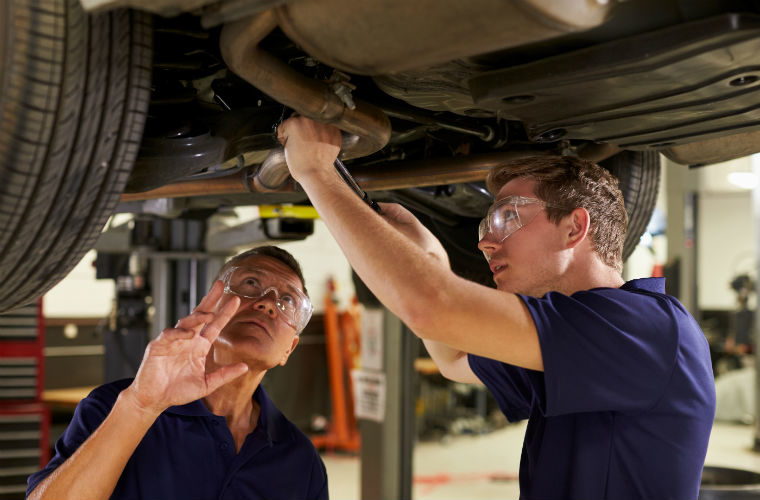Automotive businesses are missing out on valuable apprenticeships that could help fill the skills gap, the IMI has warned.
Funding is available through the government’s apprenticeship levy scheme, yet the latest data in the IMI’s Automotive Education Report suggests this is underutilised in the automotive sector, meaning many businesses are missing out.
On average, 65 per cent of all apprenticeships in the UK are supported by levy funds, but just 52 per cent of automotive apprenticeships received such support in 2022, leaving the sector in the bottom third of all UK sectors hiring apprentices.
Starter figures appear more encouraging, with 43 per cent more automotive apprenticeship starts in 2021/22 than in 2020/21.
However, this is still 13 per cent lower than pre-Covid levels in the 2019/20 academic year.
Joanna Hollingdale, careers and student membership manager at the IMI said: “Compared to other industries, automotive had the 6th largest year-on-year percentage increase in apprenticeship starts last year.
“However, levels have a long way to go before they reach pre-Covid levels, which were already falling.
“The need to act now is becoming more urgent by the day.
“We already do not have enough qualified professionals to meet the growing demand for technicians trained to work on the latest and most innovative vehicles – including electric, hybrid and ADAS-equipped.”
Utilising apprenticeship schemes helps garages, workshops and repair centres recruit enthusiastic and motivated new talent who will develop into skilled and competent professionals.
With support from the apprenticeship levy, employers with a total annual pay bill of less than £3million pay just five per cent of the cost of their apprenticeship training while the government pays the rest.
Plus apprentices can avoid the high levels of student debt associated with attending university by earning a wage while they train on the job as well as in the classroom.
Once they complete their apprenticeship they will have a formal qualification and the necessary skills to work in their chosen field.
Continuing the same pattern of the previous three years, 2021/22 saw Motor Vehicle Service and Maintenance Technician (Light Vehicle) the most popular pathway with 3,077 starts.
This is a 50 per cent increase from 2020/2021 and 41 per cent from 2019/20.
The largest increase since 2019/20 has been Vehicle Damage Mechanical, Electrical and Trim (MET) Technician which has tripled the number of starts.
In the third quarter of 2022, the largest proportion (37 per cent) of automotive qualifications were at Level 2 (or equivalent), while the top qualification was the IMI Level 1 Diploma in Automotive Maintenance.
27 per cent of automotive qualification certificates issued for the same period were for light-vehicle qualifications; the same proportion were for general maintenance (27 per cent) followed by Electric/Hybrid (16 per cent) and MOT (6 per cent).
“There is a vast range of apprenticeship courses available, meaning apprentices can find the stream that interests and motivates them the most”, added Joanna Hollingdale.
“It also means employers can attract the right talent to fill current or future skills gaps, and the levy scheme takes away much of the wage burden. It really is a win-win for apprentices, employers and the wider industry.”
The IMI is urging any employer unsure about what funding they can access to contact its support team who can provide guidance and support.







